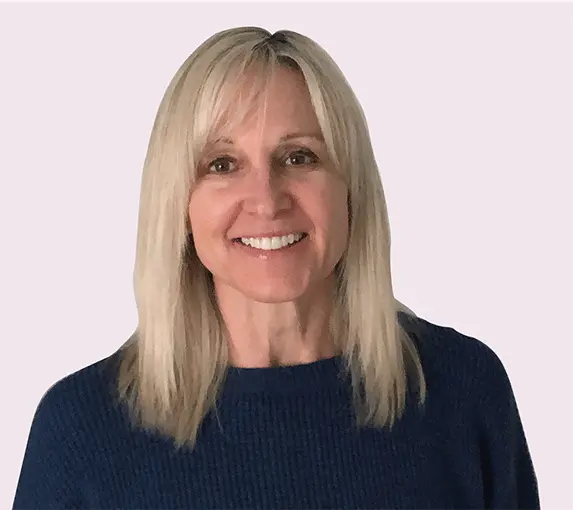
Episode 114: How the Maths — No Problem! Primary Series builds towards Maths Mastery
Miniature necklaces, Design details, and more. In this episode, Andy, Robin and Adam share how the Maths — No Problem! Primary Series builds towards Maths Mastery. How important are textbooks? Does every problem cater to all learners? Plus, the crew talk on the importance of real-life accuracy in the maths problems.
More Podcasts on Education
Continue listening to our educational experts
Meet your instructors
The school of school podcast is presented by:

Andy Psarianos
@andy_psarianos

Adam Gifford

Robin Potter
Never miss an episode
Subscribe to get the latest The School of School podcasts delivered to your inbox.
Podcast Transcription
Andy Psarianos
Hi, I'm Andy Psarianos.
Robin Potter
Hi, I'm Robin Potter.
Adam Gifford
Hi, I'm Adam Gifford.
Andy Psarianos
This is the School of School podcast.
Welcome to the School of School podcast.
Robin Potter
Are you a maths teacher looking for CPD to strengthen your skills? Maths — No Problem! Has a variety of courses to suit your needs. From textbook implementation to the essentials of teaching maths mastery. Visit mathsnoproblem.com today to learn more.
Andy Psarianos
Welcome back everyone. It's time for another episode of the School of School podcast. Here we are with Robin and Adam once again, say hi guys, in unison.
Robin Potter
Hi.
Adam Gifford
How you doing?
Robin Potter
We really have to practise.
Adam Gifford
That was rubbish, Robin. We did that so poorly.
Robin Potter
And we didn't even both say the same thing.
Adam Gifford
We'll crack this. We'll go off here and we'll practise. There was nothing in sync about that.
Andy Psarianos
We got a request to talk about how the Maths — No Problem! primary series builds towards maths mastery. I think there's a lot we can say about this. I know we've talked about what is maths mastery before, but maybe some people might be hearing this podcast for the first time. What is maths mastery? Adam, give us... Come on, give us a quick rundown of what maths mastery is.
Adam Gifford
I'll make it as simple as possible. The first thing is that it's a belief that everyone can learn given the right conditions and the right amount of time. And as part of that condition is that making sure that the supports are in place to support learning, if anything, so a mastery approach of anything. So if we're talking about mathematics, the right conditions include having the right support and the right guidance in order to support the acquisition of maths ideas. That's in essence, and then we can break that down into further bits, like whole group instruction, formative assessment, monitoring people's progress and assessment through the tasks that they're doing. So it's really important that we have an opportunity to understand where children are at, but that might be task based. So just very quickly, if I just gave you a sheet of, I don't know, a hundred times tables and said, "Right class, do this in silence."
Have I got any idea about where the children are at? No. So the task allows us to ask the right questions to see where people are at, and also to provide representations and supports that enable us to take on some pretty complex ideas, even at four years old or 40 years old, in a way that simplifies an idea and allows us to see the mathematics in such a way that we can understand that something becomes accessible without having to talk a lot about it. And if you imagine, I don't know, just imagine an old school, Victorian school teacher, "Just I will share the knowledge with you. You listen to me for half an hour and you will get this idea." In a sense, it's allowing children to explore and build on these ideas for themselves and effectively understand that they're responsible for their learning and we need to put the supports in the right time and place, and that's what we aspire to do at Maths — No Problem!. I don't know, does that sum that up?
Andy Psarianos
It does. The only other thing I would add, and maybe to really simplify it, because it's kind of technical, and we're getting into a lot of technical teacher stuff here. I suppose really what its intent is, why maths mastery is that we want every child to leave school knowing enough mathematics to either do more mathematics later on, or to be employable, or whatever the case may be. So all too often, too many children leave school not knowing enough mathematics. We want to make sure everybody knows enough mathematics and that we don't do it at the detriment of anybody. So it's not like those seemingly more advanced students aren't suffering because we're teaching this way. That's really what it's all about. So it's equitable maths, it's about closing those gaps between the underachiever and the overachievers, I suppose. Being an overachiever is not a good thing, by the way, they usually crash.
But anyway, that's the idea. So how do you teach maths properly? Which is really, what the intent is, right? So the question is, how does a Maths — No Problem! primary series, a new edition, how does that build towards maths mastery? Well, there's a lot of stuff in there. There's a lot of things that you need to consider. And we can talk about it over the period of six years, which is how long the programme goes on for, or we can talk about it, what does an individual lesson look like or even what an individual question should look like within a lesson. I don't know where to start, but what I would say is this, if nothing else, the primary series is, I believe, the best attempt ever made to create the materials necessary for mastery to happen. It's a tool for teachers and a tool for students to master mathematics.
That's really what it is. That's what it was designed to do. It was designed based on research that's been done over decades and decades and decades by different countries and different places, particularly Singapore is the one that we've borrowed a lot of the information from, because Singapore is obviously something... As far as education goes, Singapore is pretty much better than anybody else, in particular mathematics. So that's what it is. Now, where do we want to start? Do we want to start with what does a lesson look like, or do we want to start with what does the six-year career look like?
Adam Gifford
Can I just jump in? Can I just jump in? Just before that, I think there's one step before, is that research tells us that using a textbook supports children's learning and mathematics. However, not all textbooks are created equal, and that's what the research shows. So in the first instance, it is really important that the children have high quality textbooks and that material in front of them in order to make that progress in mathematics and to develop that understanding. That's like an unquestionable, and looking at the best skilling system in the world, that is just a simple fact. Teaching without a high quality textbook in front of them is unheard of and it doesn't make sense. But I do stress the fact that not all textbooks are created equally, and just a book in front of them is not just the answer. So we can't miss that part out.
Robin Potter
Just on that note, Adam, just thinking about, we've had Jeff on the podcast before and he's talking about the design of our books and just the importance of... Because he said no textbook is created equal. And he talked about the colours used and the space, really emphasised the space, in our books and the way things are laid out for students, that are more appealing or not too much on a page and not too little on a page, just the right amount. There's so much that goes into our textbooks, so much thought and consideration, and there's such beautiful books that I get that, that makes so much sense to me, that having a textbook that a student could engage with in a way more so than just, "I got to open up to page 12 and learn my lesson for the day." I think they really connect to our books, and that's part of the importance of the primary series, that they do feel a connection with the characters. And then, as they continue through the series, they continue to grow with those characters. I just had to mention that, because I think it's why our books are so effective in a lot of ways, just because of the way they have been designed.
Andy Psarianos
And that was an interesting journey, going back now to 2014, when we actually did the original templates, and the original character designs, and the page layouts, and the taxonomy of the books, and how we're going to structure them and all that kind of stuff. We don't talk about it much, but there was a tremendous amount of effort by a lot of really, really talented people that went into that original design. Back in 2014, we worked with an agency called Kin Design, which is a top 50 agency in London. I had worked with them in the past, I knew them really well. And we worked with Clair Neal and Claire Campion over there, both incredibly talented artists. Illustrators who did the original... Clair Neal did the original characters, I believe. And they illustrated all the original bits and pieces of everything, from soup cans all the way through, with a very clear palette and design structure.
All the geometry was worked out, all the different perspectives. It'd never been done before as far as I know, where anyone had ever put that much attention into a child's textbook series. From every element, and I think we talked about this at another time in a previous podcast that we recorded previously, where we talked about this, when we set out to do the series, we made sure that it was better than anything that ever existed before in every potential aspect, whether it be like illustratively or the amount of thought that went into the illustration styles. And so you look at other textbooks, and you might say that that's not important, but actually it's tremendously important. And the white space and how we calculated how to do it and all the page geometry and all that kind of stuff. The fonts, everything.
I'm quite proud of how good those books are. I'm proud of what I do and I'm proud of those books. I really am. And now this is one to the new edition now, and it's even better than it was in the first edition. And just incredible amount of talented people that went into that. And all those things are important. All those things are important. Every single representation in the book is important. Representations are super important. And I think that that's, at the heart, that's the thing that people, even if they don't know it, they benefit from it, and especially the children. There's implicit things in there, like volume, and capacity, and measures, and all these kinds of things, we put a tremendous amount of effort to make sure there's no inaccuracies in the book, that everything is the right size in comparison. Even the characters changed size over the years, and their size in reference to the things, so if they're holding a metre stick, that'll be in relationship to how tall the child will be at that age. The metre stick will be the character. Little nuances like that, which you think are not really that important, but they actually, they stack up over a great period of time.
Adam Gifford
Well, they are. I read something the other day, Andy, and I don't mean to embarrass anyone in saying this, but this was something that was published, funded by the DFE essentially, and it was talking about beads in a necklace. And it was talking about a necklace length of three centimetres. Who's got a neck that a three centimetre necklace is going to? So when it comes time to represent that in real life, you think to yourself, "Well, good luck with that. What is this for, a pencil with a stuck on paper face?" And I think that these are the things that you... How much thought's gone into that? If we want to say, "Well, I don't understand this enough," or how do we talk about the scale of this necklace, or relative to what? Or if it's a repeating pattern of these beads, can we make it to get an idea?
So if I use six beads instead of the three, it's going to be twice as long. But you can't do that if the starting point is not right. And I think that this is the thing, these are things that we see that aren't just coming from... It's not like just Adam Dad stick something on the internet and hasn't really thought about. These are the things that we would expect to be at a very high standard, but when you start to unpack it, they should be better. But the bottom line is that we do think about that and those sorts of things. That's really important. That is really, really important and should be important everywhere. But fathers aren't going to do it, we got to. Because otherwise what happens to the children?
Andy Psarianos
That's right.
Adam Gifford
That's part of it.
Andy Psarianos
Exactly. So when you say, "Where's an example?" A really practical example would be, and I know you do this, Adam, when you write stuff, and I certainly do as well, if I say plane flies from New York to Los Angeles, in a question, you're actually going to look up what the distance is. And if the numbers don't work out, you're going to change the problem. We're going to make it to Baltimore or something. Because you need numbers that maybe you need in the particular question that you're doing, let's say it's addition of two numbers, you need to be able to come up with two numbers where the second digit is going to add up to more than 10. And then you spend hours doing this, sometimes looking up what seems like really-
Adam Gifford
I can tell you, honestly, every fruit to the gramme. You want average messes of fruit. I'll tell you.
Andy Psarianos
If you open a Maths — No Problem! textbook, you say two apples and a banana weight da da da da da, and a grapefruit and a lemon weight so much, you can be pretty sure that those are accurate weights, and that we do that. But you say, "Well, why is that important?" Well, it is really important because, I remember when I was doing my study group, and I don't do it anymore, I need to start that up again, but anyway, that was a tremendous eye-opener for me. In my study group, I asked the children, we were talking about distance, and I said, "Well, what's a hundred kilometres from here? Because you guys, you get in cars and drive through your parents, what's a hundred kilometres?" And they didn't know. You could get answers that range from the other side of town to something that's like 3000 kilometres away.
They don't really know how much a thousand kilometres is, or they don't know how much a hundred kilometres is, but they should know. The should know that a thousand kilometres is really, really not something that's drivable in a day, but a hundred kilometres will take you more than an hour. That's the kind of stuff that they need to understand. Because otherwise those numbers are meaningless. You can't say a watermelon weighs 300 grammes, and watermelon doesn't weigh 300 grammes, or you can't make a necklace that's three centimetres, it's not a necklace if it's three centimetres long, it might be just a bunch of beads on a string, but it's definitely not a necklace because there ain't a neck you're going to get that around. That's an inch, it's just a little bit over an inch, three centimetres.
Adam Gifford
And I think that does go back to the original question, about how do we support a mastery approach. Part of that is ensuring that the task we can replicate it and children can develop the language around it and talk to it. And this is really important, but how can you do that if those things aren't in place? It's very difficult, very difficult to let children go, like you are saying, because it could be that we have to use apricots or something even smaller still than an apricot, because it's two digit numbers. Well, there you go. So as soon as we introduce something else, we've put it out of the scope of the lesson, or it's too difficult, or it's not accessible, or it's whatever else it may be. I think that's the thing, that if we want to ensure that all children get given an opportunity to learn, don't exclude them straight away from the problem.
And I think that's another thing that we can talk about with Maths — No Problem! What part of a mastery approach is a whole class instruction, something that gets us talking and that we can assess to see where the children are at. That's why we always start with that problem. And those are well constructed problems that are there to encourage that conversation in the whole class. Where are the children at? Can we hear where they're at? Can we generate those ideas? And, is it accessible? Because if we get those wrong and it's not accessible to the children, we're in trouble. Maths to them becomes, "Man, don't want one of those. No, I'm switched off from the start." So I think that that's another aspect of our books that is so important to an approach that leads us to something a bit special.
Andy Psarianos
The challenge is to write a question that those who are still struggling with a concept can answer in a more simplistic way, but that the more advanced students can answer in a, let's say, more sophisticated way. So let me give you an example for a geometry question. You could have a rectangle that from two corners inside draws an isosceles triangle, can you picture that? So you have an isosceles triangle within a rectangle, it's not a square, it's a rectangle. And you could ask the question, what are the four sides that are the same length, and how do you know? Now that could be a legitimate question. Now, for a more early learner, one who's not necessarily gotten a deep concept of geometry yet, they may say, "These four sides are the same length, and I know because I measured them." But a more advanced learner will say, "Well, the three sides of the equilateral triangle are all the same length. And the one that's parallel to one of those sides is also the same length, because it's a rectangle."
So you've got the same question answerable at two entirely different levels. So it's embedding that into question. So that's what mastery looks like in a question, in an individual question. Now, not every question is that sophisticated, but it's those kinds of things where you have accessible to those who can only measure versus accessible to those who have now formed this much higher level of geometrical thinking, where they know equilateral means all size are equal, rectangle means the two parallel size are equal, therefore I know without even measuring from the given information.
So that's what a mastery. So it's writing those questions, but then making sure that if it's a measurement question that the measures are right. So all those things are critical in producing a mastery programme. Now, why textbook? Well, do you really, really believe that teachers, A, know how to do this, have been trained to do this? And even if they know how to do it, do you think they have the time to do this every day, come up with this stuff? There's no way. It's really hard to write stuff like this. It takes a long time. It takes a long time to get good at it. And even when you're good at it, it takes a long time to do.
Adam Gifford
I think the other thing, just one other thing off the back of it in terms of the books, and I think that this, if you're not familiar with the Maths — No Problem! books, is that you've got worked examples in there. I think sometimes people think about textbooks as just this is a series of questions with a blank, and the teacher is the one that's the font of all knowledge, and then you go away and just practise in the book. Now, practise is essential, there's no denying that, but being able to see worked examples is one of the best ways to develop the language and understanding of mathematics. Also gives us a chance as teachers to assess. What's going on there? Explain to me what you see. And simply a child saying, "Well, I can see two yellow counters." "What about the others?" "I can see three red counters."
"How many counts are there all together?" "Hang on, give me a second. 1, 2, 3, 4, 5. All right. I've noticed that below there, there's two, and I don't know what that symbol is. And there's a three." And it's saying it's five. I wonder if that's saying what you are saying. It allows us to have this conversation rather than just, "Do you know the answer? Can you fill that in?" And that's not to say it's not an important part, but I think that's another part of the textbook that if you've not used them before, is utterly essential for a teacher to assess, for children to develop their ideas and understanding, and also to develop that language, which is what mathematics is.
So that's another feature of the book that I think, and we three all know the amount of thought and effort that goes into ensuring those representations. The way they're displayed is what's needed. So nothing frivolous, nothing that's just because it makes it look pretty. This is all designed that everything's got a function on there. And I think that that's something that separates out the textbook from others. It gives you so much as a teaching tool in a classroom from relatively little on a page. You know what I mean? The amount that you can get from it is so much greater within the classroom.
Andy Psarianos
And just to wrap it up, the other quick elements that are critical in order to teach to mastery and what the primary series, the new edition primary series maths book for Maths -- No Problem! helps teachers do is that, if you look at a question, so now the question that I was just talking about, the geometry one, obviously that's not a year one or year two question, but what you need to know is that starting at year one, we built up all the knowledge in a spiral way. So maybe the previous year they did equilateral triangles, but that year they did parallel sides for the first time. And the properties of a rectangle were the previous lesson, so now all those things had to happen in order for you to be able to ask that question. And now you take that by every topic, and this really complicated mesh that needs to happen in order for them, by grade five, year five, to be able to answer that question has all been worked out for you, and you're not leaving any of that to chance.
So there's not going to be any gaps. It's not going to be like, "Damn, we forgot to teach parallel lines. What a shame." Or, "We forgot to go over that with equilateral triangles." Or, "When we talked about equilateral triangles, we only talked about the angles, we didn't talk about the sides." Or we didn't talk about regular shapes at all, we just did triangles. And we just said, "There's this other thing called equilateral, but we never talked about what a regular shape is." Because maybe they can use that information somewhere else. "This is a regular octagon. What does that mean?"
All these things have to come in place at the right time. That's really hard to do. So all this happens and has been done for you. So this is what the primary series does for you, is it gives you the content that meets all this criteria all the way through, so that you're not leaving things to chance, so that teachers can spend their time planning their lessons and thinking about, "What am I going to teach today? How am I going to know whether or not they've learned it? What am I going to do with those that are really struggling to learn it that day? And, what am I going to do with those who already know all of this when they come into the classroom?" And that's what a teacher should be doing every day. And that's hard enough for a teacher, to do that every day, for every subject and lesson that they need to do. That's it. That's what it does, and that's how it leads to maths mastery.
Robin Potter
Well answered. Thank you so much everyone.
Andy Psarianos
Thank you for joining us on the School of School podcast.
More Podcasts on Education
Continue listening to our educational experts
